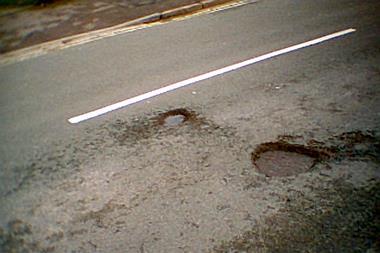Liability fraud detection less advanced than whiplash
Would-be fraudsters are turning to pothole trips as a way of making money as the net tightens on suspicious whiplash claims, investigators have warned.
Individuals can sue local authorities for failing to maintain the road if they trip up and are injured. Under a suspected fraud, people either deliberately trip, or claim an unrelated injury was caused by the public body’s negligence.
The escalating problem has prompted law firm Keoghs to set up a separate casualty and liability investigations team. In the past year it has seen a big jump in the number of pothole claims it has been asked to investigate for insurers.
It has also seen several claims submitted at the same time for the same pothole.
“We are seeing a substantial rise in pothole claims to the extent that it might be organised. Where before it might have been opportunistic, it does now seem to be leaning towards an organised approach,” Keoghs director of fraud rings Ruth Needham told Insurance Times.
“Historically, casualty has traditionally been seen as an area where claims are negotiated with the aim of getting rid of them quickly and where fraud is suspected, it has tended to be opportunistic.
“However, in the past 12 months we have seen an increase, especially in pothole claims, and we have asked ourselves, ‘just where are these coming from?’ The evidence would seem to suggest that these claims are in fact becoming much more organised.”
Profitability for fraudsters in casualty and credit hire
Last year Keoghs helped insurance companies save around 37m from organised fraud rings, a 10% increase on the previous year, of which 90% was taken up by motor fraud, with the remainder on casualty, credit hire, pet and travel.
Needham expects the £37m figure to increase as fraudsters move into casualty and liability claims, where detection systems and techniques are not as advanced as those for motor.
Keoghs has also seen a rise in credit hire fraud, where storage, recovery and credit hire prices are over-inflated.
“Casualty and credit hire fraud have been growing steadily, but we have seen a peak this year, which I expect to continue. Motor is kind of steady. It will climb, but it always does. I don’t think we will see a double digit increase this year, but I wouldn’t be surprised if we saw a 30% to 40% increase in credit hire and casualty,” Needham added.
“We are seeing a significant number of fraud rings that are adapting to loss of earnings and credit hire claims. They have realised their ability to claim for whiplash can generate more questions than revenue.
“Casualty and liability fraud is getting more prolific. For years we have been looking and focusing on motor, quite rightly, because that is where the substantial amount of fraud was. But it is changing and we cannot just ignore what’s going on in casualty fraud as it continues to increase.”

































No comments yet